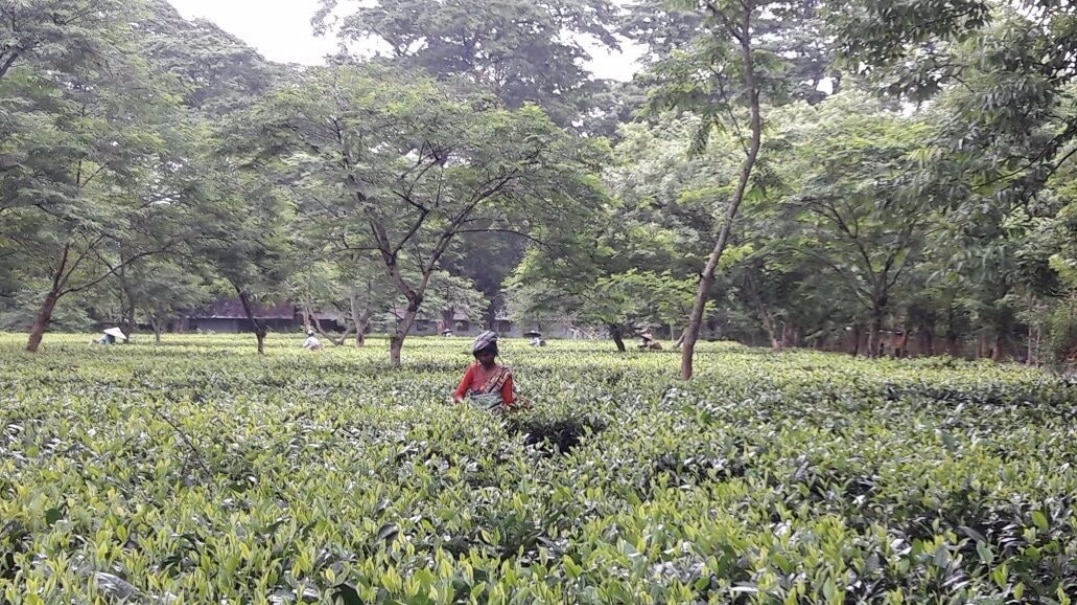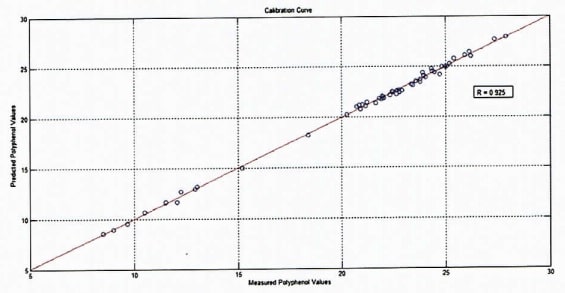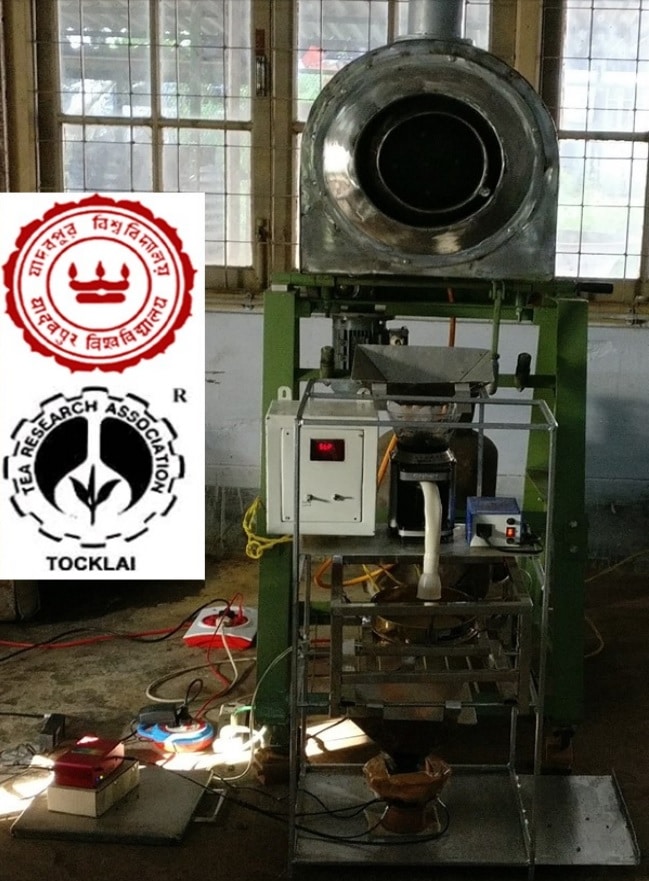The quality of tea liquor primarily depends on the quality of inbound fresh leaves to a tea factory. Several researchers at the Tocklai Tea Research Institute and Jadavpur University are working in close collaboration to develop NIR prediction methodologies of a few quality attributes of tea cultivars of North-East India. Work was initiated in project mode, funded by National Tea Research Foundation in Kolkata, and a NIR methodology for an onsite estimation of total polyphenol in fresh tea leaves was developed.
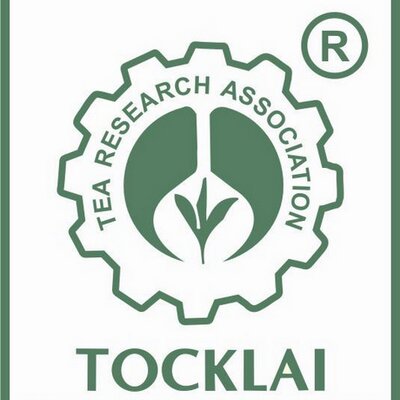
StellarNet NIR spectrometers were used in the development of an industrial set-up using diffuse reflectance near-infrared spectroscopy for quick and on-spot estimation of total polyphenol content, which is one of the major quality indicators of tea. In the inspection system, freshly plucked tea leaves are dried with a heating system designed in such a way that the moisture content is reduced to around 3-4%. The dried leaves are then ground and sieved through 250µm mesh. Samples thus produced are placed automatically before the near-infrared beam and assessment of total polyphenol is done instantaneously.
Fig. 1: The main entrance to Tocklai Tea Research Institute, Tea Research Association, Jorhat 785008, Assam, India
Experimental
Fresh leaf samples, the bud and two tenninal shoots, from the cultivars with extreme characters of Assam, China and Cambod were collected from the experimental garden of Tocklai Tea Research Institute (TTRI), Jorhat, Assam and STG plantations for the entire harvesting period. Intrinsic enzymes in the fresh tea samples, plucked in seven-day interval maintaining 65-70% fine leaf, were deactivated and dried by heating. The dried leaves were then ground and sieved through 250 µm mesh. The powdered samples were then immediately packed and sealed in poly-pouches for reference biochemical analyses and spectroscopic scans.
In order to get a reference value of the polyphenols content of test samples, colorimetric method using Folin-Ciocalteu (FC) reagent was used. The TPs in the samples were estimated colorimetrically using FC phenol reagent by following the method of ISO 14502-1 (ISO, 2005). The method described by ISO standard 14502-1 (ISO, 2005) has been established as a standardized method for use in the routine quality control and measurement of tea products. This standard is an analytical tool widely used to determine the phenolic compounds for both black and green teas.
Both sample preparation process and biochemical procedures were time consuming and labor intensive. This led to the development of an integrated system which drastically reduced the sample preparation time. The machine could be easily set up at the green leaf unloading bay together with the NIR unit for onsite estimation/inspection.
Tea, derived from the bud and two terminal shoots of tea plant Camellia sinensis (L.), is one of the most popular non-alcoholic beverages in the world. It has many health benefits and therapeutic values. Phenolic compounds present in tea leaves, which account for 20-35% of the dry tea, have long been regarded as one of the principal quality indicators of tea. The quantity and proportion of polyphenols present in green leaf is generally reflected in the chemical composition and characteristic astringent taste of made tea liquor.
The polyphenolic compounds in fresh tea leaves decrease with maturity. Thus, the harvesting or plucking standard of the tea shoots practiced has a direct implication upon the ultimate cup quality and market price. The technique generally adopted by the tea industry to ascertain the quality of the inbound harvested leaves is by physical examination of individual green leaf from a randomly selected bulk.
Calibration Model and Development
Reflectance spectra of the powdered samples were taken in the near-infrared (NIR) wavelength range of 900-1700nm using the DWARF-Star NIR spectrometer from StellarNet, Inc. The optimum range for total polyphenol in tea had reported in many research papers to be in the range from 1460 to 1624.5nm. In order to calibrate the regression model of NIR tea spectra partial least squares (PLS) algorithm was used.
It was observed that the best model was obtained when the data was preprocessed using MSC techniques with an average accuracy of prediction of 91.70%. With 100 samples, the RMSEP, R and average RPD were obtained as 0.5162, 0.925 and 8.845, respectively, which demonstrate the efficacy of the model.
Conclusion and Future Work
Researchers at Tocklai Tea Research Institute and Jadavpur University have reported the development of an industrial set-up for use in the tea industry based on NIR spectroscopy. The set-up is expected to be of great benefit for quality detection of inbound tea leaves to tea factories and is expected to be of great use for them in obtaining appropriate quality index of their raw material (green leaves) and maintaining quality of their end product (finished tea) without undergoing through the tedious chemical processes. The system has been installed at ITRI situated in the hub of the tea garden at Assam, India.
Currently the research team is working on a methodology for estimation of caffeine in tea and has reached final stage. Additional components such as theaflavin in black tea and catechin in green tea are also in process. Some of the latest findings were presented by at the “The Sixth Asian NIR Symposium” held at Kunming, China from 21st to 24th June 2108 (Figs. 5, 6, 7). See the photos below!

S. Chanda presenting a paper at the Symposium.
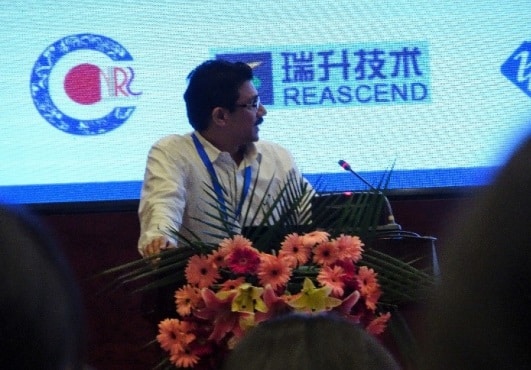
A. K. Hazarika presenting a paper at the Symposium.
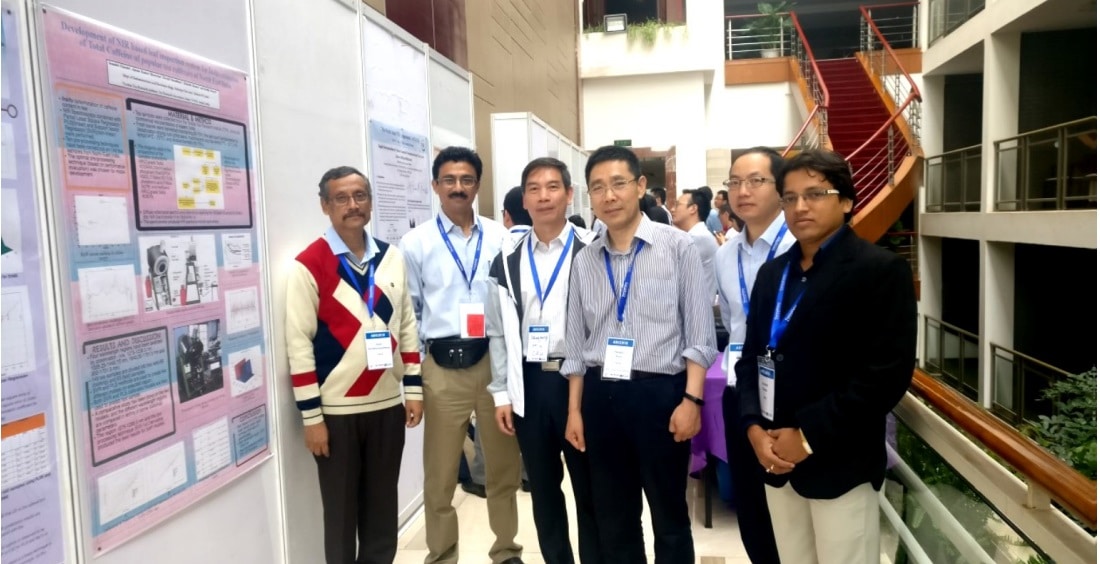
Extreme left: Prof. Rajiv Bandyopadhyay, Jadavpur University, Kolkata
Second from left: Ajanto Kumar Hazarika, Tocklai Tea Research Institute, Jorhat, Assam
Extreme right: Somdeb Chanda, Jadavpur University, Kolkata



